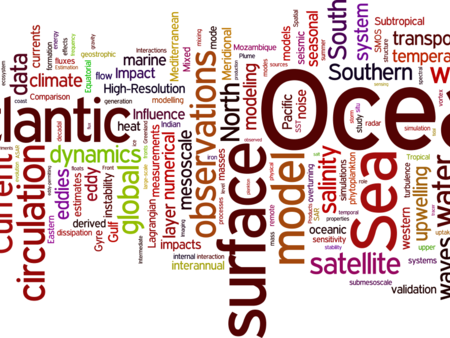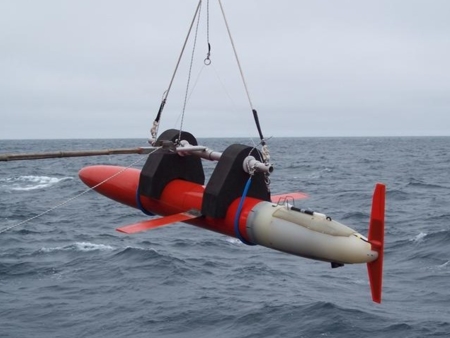Gwendal Maréchal
Thesis subject: Variabilité des hauteurs de vagues, directionnalité des états de mer et propriétés des courants de méso. et sous mésoéchelle
Director: Fabrice ARDHUIN
Funding : CNES & ARED
–
At Mesoscale (10-100km), surface gravity waves are closely correlated with surface currents. These currents refract waves, advect the wave action and also change the source term Sin (Ardhuin et al. 2016). The two systems can exchange energy between them and waves frequencies are modified by the current (like a Doppler effect). As a conclusion, there are a lot of processes to investigate in a wave-current field.
During this PhD I will effect numerical simulations to quantify these interactions between waves and currents (by spectral analysis) in specifical global areas. These studies will aim at explaining the signature of mesoscale structures (as front, filaments, eddies or internal waves) in the wave spectrum. Satellites data from altimeters and from the recent satellite CFOSAT (French-Chinese satellite) will complete and verify these studies.
To quantify this waves-currents interactions allows not only to understand huge sea states that we can met in great global currents (e.g Agulhas current I.V. LAVRENOV 1998), but also apprehend coastal hazards (sea level unnaturally high, Bertin et al. 2012). Likewise (and not the least) improve the knowledge of these interactions will allow to improve currents measurement. Indeed, today the surface current measurement is relatively poor at the global scale using in-situ devices (lagrangian drifters, buoys, gliders, etc.) or incomplete using remote sensing (only the geostrophical component of the current is available using altimetry). These gaps leaded the development of the SKIM project (proposed by the LOPS in the ESA-Earth Explorer 9), a spatial project that will be able to measure, among others, the surface currents. Increasing the knowledge of the joint wave-current variability can only be beneficial, and will prove necessary for the future of the ocean observation from space.
Ardhuin, F., S. T. Gille, D. Menemenlis, C. B. Rocha, N. Rascle, B. Chapron, J. Gula, and J. Molemaker (2017), Small-scale open ocean currents have large effects on wind wave heights,J. Geophys. Res. Oceans, 122, doi:10.1002/2016JC012413.
Ardhuin, F., Aksenov, Y., Benetazzo, A., Bertino, L., Brandt, P., Caubet, E., Chapron, B., Collard, F., Cravatte, S., Delouis, J.-M., Dias, F., Dibarboure, G., Gaultier, L., Johannessen, J., Korosov, A., Manucharyan, G., Menemenlis, D., Menendez, M., Monnier, G., Mouche, A., Nouguier, F., Nurser, G., Rampal, P., Reniers, A., Rodriguez, E., Stopa, J., Tison, C., Ubelmann, C., van Sebille, E., and Xie, J.: Measuring currents, ice drift, and waves from space: the Sea surface KInematics Multiscale monitoring (SKIM) concept, Ocean Sci., 14, 337-354, https://doi.org/10.5194/os-14-337-2018, 2018
I.V. Lavrenov, The Wave Energy Concentration at the Agulhas Current off South Africa, Natural Hazards, 10.1023/A:1007978326982 1998/03/01







